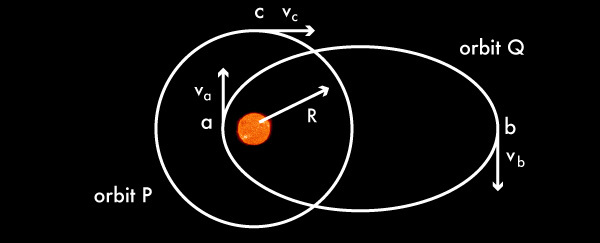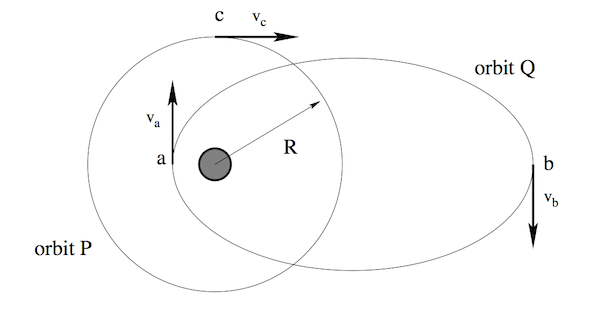Orbiting Ranking
 Consider the two orbits around the sun shown below. Orbit
is circular with radius
, orbit
is elliptical such that the farthest point b is between
and
, and the nearest point a is between
and
. Consider the magnitudes of the velocity of the circular orbit
, the velocity of the comet in the elliptical orbit at the farthest point
, and the velocity of the comet in the elliptical orbit at the nearest point
. Which of the following rankings is correct?
Consider the two orbits around the sun shown below. Orbit
is circular with radius
, orbit
is elliptical such that the farthest point b is between
and
, and the nearest point a is between
and
. Consider the magnitudes of the velocity of the circular orbit
, the velocity of the comet in the elliptical orbit at the farthest point
, and the velocity of the comet in the elliptical orbit at the nearest point
. Which of the following rankings is correct?

Note : This problem appeared on the 2012 F = ma exam.
This section requires Javascript.
You are seeing this because something didn't load right. We suggest you, (a) try
refreshing the page, (b) enabling javascript if it is disabled on your browser and,
finally, (c)
loading the
non-javascript version of this page
. We're sorry about the hassle.
We Can See that Va > Vc > Vb By looking into the diagram.........
This rules out all the three except the answer.